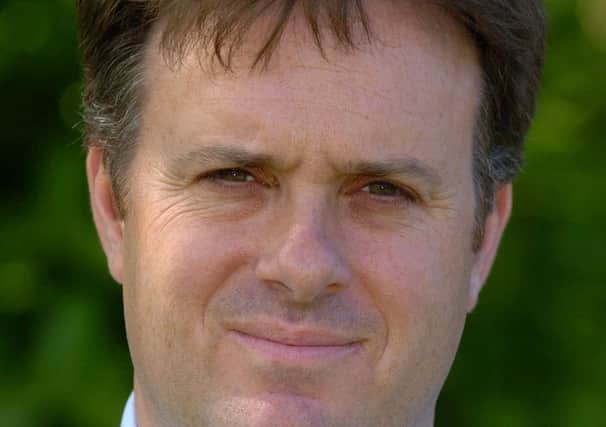Fears of digital slow lane for remote parts in broadband split


Tory MPs from North Yorkshire have warned of a “deepening digital divide” between the 90 per cent of properties which will have access to superfast broadband before the end of the year, and the remaining 10 per cent – the most rural areas – for which the Government has no plan.
Ministers have spent £500m on projects to improve broadband speeds in remote parts of the UK which would not otherwise be reached by commercial firms.
Advertisement
Hide AdAdvertisement
Hide AdDespite being England’s largest and most rural county, North Yorkshire is roaring ahead of almost every other part of the country in delivering its £35m broadband plan. More than half the county’s telephone cabinets have now been upgraded to offer so-called “superfast” speeds of at least 25Mbs – far above the national average – and by October the county will have hit the Government’s target of 90 per cent coverage.
But with the project approaching completion, MPs are increasingly concerned about the 40,000 properties which will not be catered for in that final 10 per cent.
“There is a deepening digital divide between the 90 per cent and the (remaining) 10 per cent, who appear to be being left behind,” said York Outer MP Julian Sturdy.
“I see the divide first hand in my constituency. Communities such as Haxby, Wigginton, Dunnington and Elvington are enjoying the benefits of superfast speeds... yet there remain a number of small communities sadly too far from the local cabinet to benefit.
Advertisement
Hide AdAdvertisement
Hide Ad“Those include Askham Bryan, Askham Richard, Hessay, Acaster Malbis... to name a few.”
Superfast broadband has been hailed as the biggest technological revolution for the countryside since the arrival of the railways, offering people the opportunity to work a from the most remote areas using near-instant download speeds and innovations such as video-conferencing.
But the coalition’s decision to focus on a 90 per cent coverage target when it was elected in 2010 has left the hardest-to-reach areas with no clear plan of how they will ever receive the technology.
North Yorkshire was made a pilot area for the roll-out, and owing to the county council’s expertise in deploying broadband networks – mainly through its internet quango NYNet – has almost finished its project while other areas are still on the drawing board.
Advertisement
Hide AdAdvertisement
Hide AdHowever, this means it is the first area to face the challenge of how to move beyond the 90 per cent target and ensure the rest of its residents are not left behind.
“We have made good progress in a relatively short space of time,” said Selby and Ainsty MP Nigel Adams. “(But) with the project now halfway through, the problem is some villages will achieve only 2Mbs speeds. They can see that is the case, and feel they are being left in the slow lane.”
Successful lobbying by North Yorkshire MPs saw the county handed an extra £3m by the Government late last year, which coupled with £3m from the local council should see coverage increased to around 92-93 per cent by the middle of 2015.
Nationally, Ministers recently set aside a further £250m for rural broadband and increased the national coverage target to 95 per cent by 2017. However, thousands of properties will still be left without high-quality broadband until the Government finds a solution for the most remote areas.
Advertisement
Hide AdAdvertisement
Hide AdHarrogate and Knaresborough MP Andrew Jones said there was a “powerful” case for extending the Government target further, but that the key question was how this would be achieved.
The issue for technicians is how best to reach the most remote areas. There has been no guidance from Ministers about whether to press ahead with the fibre-optic cables preferred by BT or switch to cheaper technologies such as long-range wireless or satellite – and no funding to back the increasing expense.
Culture Minister Ed Vaizey said an announcement was imminent on how the next £250m will be spent, and praised North Yorkshire as “one of the most successful areas” at deploying the new technology.
“I would characterise the tone of these remarks as, ‘It’s going well, but could do better,’ he said. “We could do better in two or three areas, the first of which might be the allocation of the next £250m.
“We want to get that money allocated as soon as possible. My officials and I and BT were all looking at the issue over the Christmas period. We hope to make an announcement shortly.”